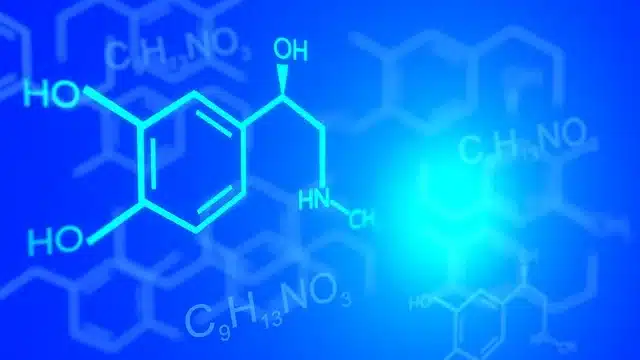Learn about the chemistry of molecules found in and associated with living systems. This course focuses on the structure and role of biochemical molecules, and students will learn about the major biological molecules including amino acids, proteins, sugars, polysaccharides, lipids, enzymes, vitamins, hormones, and nucleic acids. This course will prepare you for the advanced course Biochemistry C (Animal Biochemical Processes)
This course follows on from Biochemistry A (Animals) or Biochemistry A (Plants).
Course Aims:
- Describe the characteristics of a range of biochemical molecules
- Distinguish between different groups of biochemical molecules.
- Describe the structural characteristics and other properties that differentiate standard amino acids one from another.
- Discuss structures of different proteins (both covalent and 3-dimensional).
- Describe common protein dynamics including folding, structural evolution and haemoglobin function.
- Describe the structure and dynamics of different types of saccharides and polysaccharides.
- Discuss the composition and structure of both lipids and membranes.
- Describe the structure and dynamics of different types of enzymes, vitamins and hormones.
- Describe the structure and function of different types of nucleic acids including DNA and RNA.
- Identify some of the basic laboratory techniques used in biochemistry and to appreciate the importance of safety in the laboratory.
There are 9 lessons in this course:
- Introduction to Biochemical Molecules
- What is Biochemistry?
- Cells – Prokaryote Cells, Eukaryote Cells, Viruses and Prions
- Biomolecules – Proteins, Carbohydrates, Lipids, Nucleic Acids, Vitamins and Co-enzymes, Hormones and Neurotransmitters
- Metabolic Processes – Catabolism and Anabolism
- Amino Acids
- Amino Acids – Biochemical Nomenclature
- Amino Acid Properties – Acidic and Basic, Hydrophilic and Hydrophobic, Polarity of the Side Chain, Amino Acid Polarity and Non-standard Amino Acids
- Genetic Coding of Amino Acids
- Terminology
- Structure of Proteins
- Proteins Functions
- Protein Structure – Primary Structure, Secondary Structure, Tertiary Structure, Quaternary Structure
- Fibrous Proteins – Collagen, Elastin, Keratin, Globular Proteins, Albumin
- Cofactors and Conformation
- Post-Translational Modifications
- Protein Denaturation
- Protein Degradation
- Protein Dynamics
- Protein Folding
- Molecular Chaperones
- Heat Shock Proteins – HSP90, HSP70, HSP60, Small Heat Shock Proteins
- Chaperones
- The Importance of Understanding Protein Structure
- Structural Evolution of Proteins
- Dynamics of Haem Proteins – Haemoglobin Co-operativity
- Sugars and Polysaccharides
- Saccharides – Monosaccharides, Oligosaccharides, Polysaccharides, Lectins
- Polysaccharide Bonds
- Polysaccharide Function – Classification of Monosaccharides, Ring or Chain Types, Complex Sugars
- Monosaccharides – Glucose, Fructose, Galactose
- Disaccharides – Sucrose, Maltose, Lactose
- Polysaccharides – Starch, Dextrin, Glycogen, Cellulose
- Lipids (Fats) and Membranes
- Lipids – Fatty Acids, Triacyclglycerols, Neutral Lipids, Phospholipids, Glycolipids, Terpenoids
- Cholesterol
- Cellular Membranes
- Terminology
- Enzymes, Vitamins and Hormones
- Enzymes – Coenzymes
- Vitamins – Vitamin Classification, Reviewing Vitamin C
- Hormones – Plant Hormones
- DNA and RNA
- Nucleic Acids – Structure of DNA, Types of RNA
- DNA Replication
- Inheritance
- Interesting facts about DNA
- Laboratory Techniques
- Laboratory Health and Safety
- Common Experimental Methods – DNA Methods, Protein Methods, General Methods

